Most tech organizations reach a point where “HR” can no longer be handled by just one person. Hiring ramps up, team dynamics become more complex, and suddenly, the HR team is expected to cover everything, from onboarding to performance, engagement, and retention.
What actually makes a strong HR team, and how can you build one that scales with your organization instead of slowing it down?
How organizations usually build HR teams and why it breaks down
In most growing tech organizations, the HR team doesn’t start with a long-term plan. It begins as a reaction to immediate problems.
Recruiting needs become urgent, onboarding takes too much time, managers ask for help with performance reviews, and culture initiatives get pushed onto whoever has the capacity.
As each new need appears, organizations respond by hiring someone to “fix it,” but rarely take a step back to define what the HR team structure should actually look like.
Reactive hiring instead of strategic roles
The typical approach is reactive: bring in a recruiter when hiring spikes, then add a “People Lead” role when culture becomes a concern. Over time, the team grows based on what is urgent, not what is strategic. Each person ends up owning parts of different processes, but no one owns the whole picture.
This leads to overlaps, gaps, and growing internal confusion. Who’s responsible for performance? Who tracks employee engagement? Who talks to leadership about retention risks? The answers are never quite clear.
No clear HR team structure
Without defined responsibilities or job leveling frameworks, the HR team becomes a patchwork of Notion pages, Slack threads, and outdated spreadsheets. Efforts to improve people operations exist, but they aren’t connected. Reviews are completed but not followed up on. Surveys are sent but never analyzed. Growth conversations happen but aren’t documented or revisited.
As a result, even when the HR team grows to three or more people, it doesn’t necessarily become more effective; it simply becomes busier.
HR team leaders are stuck in execution
In this kind of environment, even senior HR profiles end up focused on logistics. Instead of leading strategically, they’re responding to requests, preparing last-minute reports, and chasing feedback from multiple systems.
They’re held accountable for employee experience but have no reliable way to measure or report on it. And without reporting, HR team leaders can’t make a case for what is working or what needs to change.
Building an HR team is especially hard in tech
Most tech organizations run just fine without a dedicated HR team structure in the early days.
When there are 10, 20, or even 30 people, hiring is often handled by a founder, a COO, or an office manager. One person, typically a generalist, handles recruiting, onboarding, basic administration, and any other tasks that arise. And for a while, that works.
But somewhere between 30 and 40 employees, that informal setup starts to strain. Expectations grow faster than the team itself: performance reviews, engagement, leveling, retention, and suddenly, the HR team is expected to cover all of it.
The problem isn’t just headcount. It’s clarity. Organizations often hire someone to “own” one urgent area, like recruiting, but once they’re in the role, they’re asked to manage five more: onboarding, feedback cycles, employee engagement, DEI, and more.
The result? Frustration. People who come in to focus on one thing are often pulled into tasks they didn’t expect, often without the necessary structure, skill set, or support to do them well.
What makes a strong HR team
A strong HR team isn’t defined solely by headcount. Instead, it rests on three pillars that ensure the HR team structure can operate effectively and strategically:
- Clear structure and defined roles

Defining precise responsibilities prevents confusion and overlap. This clarity allows HR professionals to focus and deliver results without burnout, regardless of team size.
- Developing the right HR skills
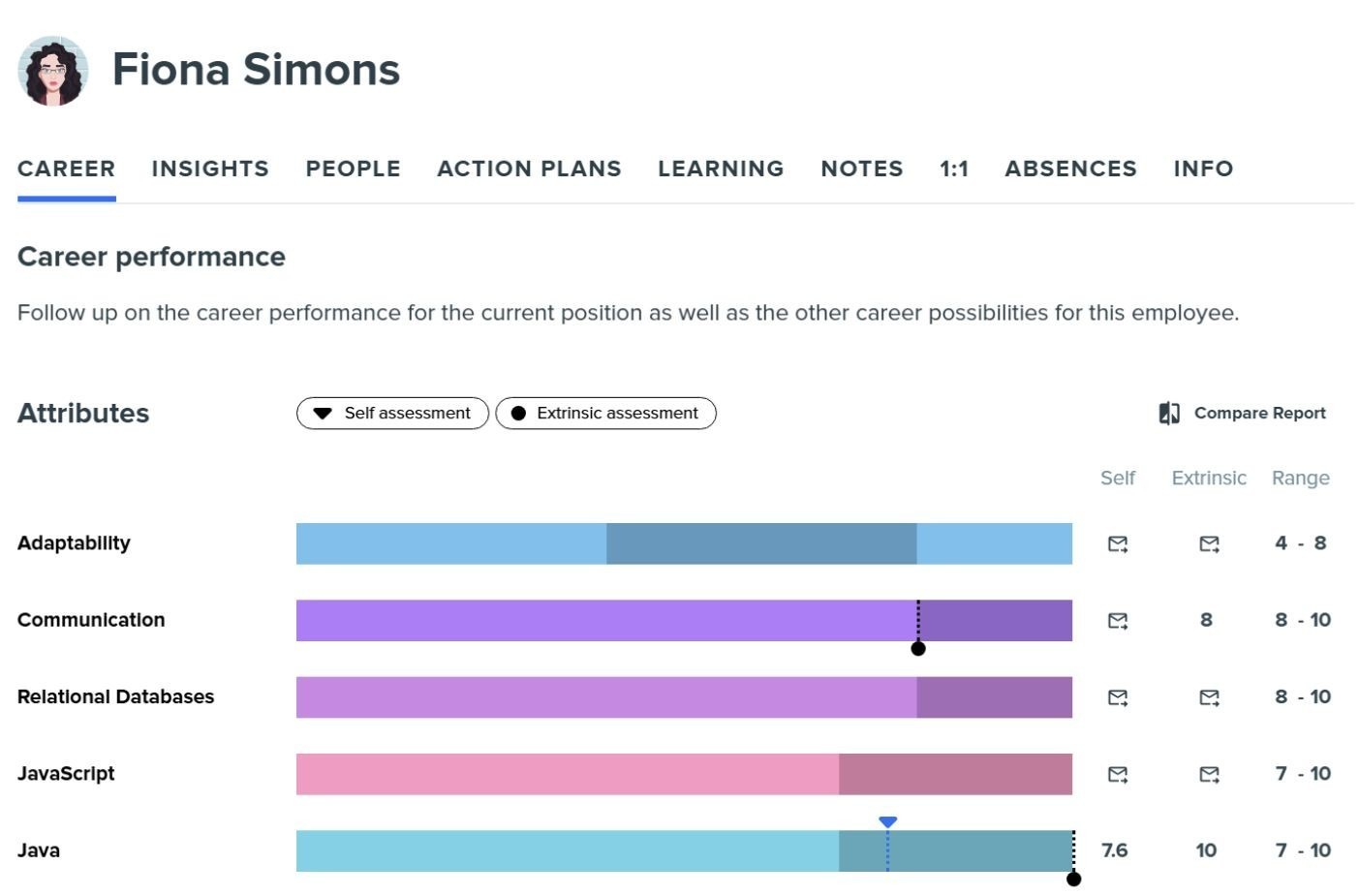
A modern HR team goes beyond interpersonal skills. Data literacy, strategic thinking, and coaching enable HR team leaders to interpret feedback, identify trends, and influence business decisions based on evidence rather than intuition.
- Clear and actionable reporting
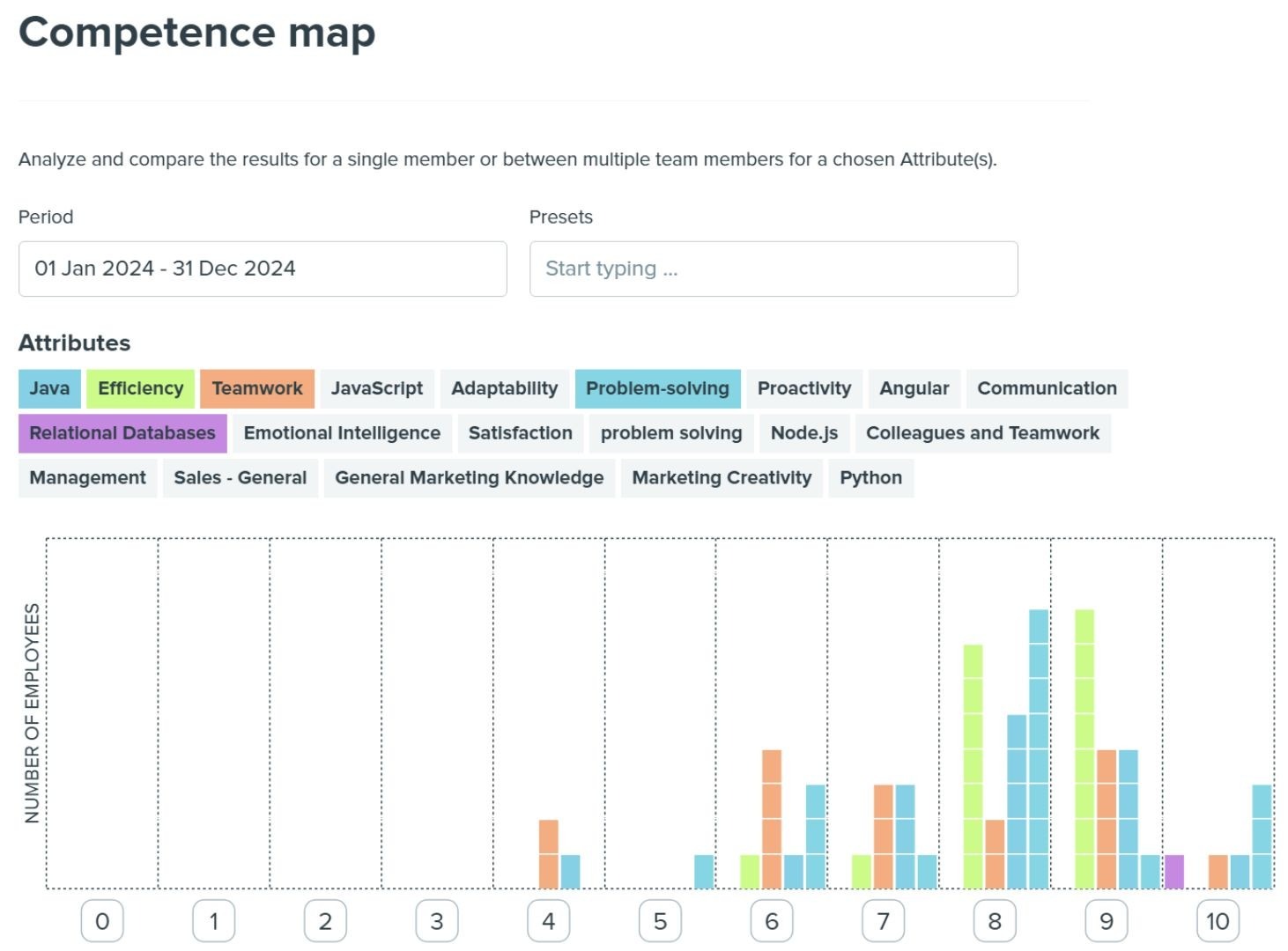
Reporting is fundamental, not optional, for HR to understand the organization's status, demonstrate impact, and secure budget and authority for initiatives. Without it, HR’s value remains invisible, limiting growth and influence.
Why reporting is critical for HR’s success
Many HR teams struggle because they lack visibility into real-time skill levels, engagement, and development. Without a clear overview, it's impossible to measure progress or prove impact on leadership. This invisibility often leads to an underfunded HR team structure and stalled initiatives.
💡 According to myHRfuture, 85% of C-suite executives believe data literacy in HR will soon be as important as basic computer skills. Yet only around half of companies have a truly data-driven HR culture, and just 51% of HR professionals are actively developing those skills.
How Exyn Technologies used HR analytics to scale smartly
Exyn Technologies, a fast-growing robotics startup, faced the typical challenges of scaling small teams: scattered feedback, manual reporting, and a lack of a single source of truth. To address this, their Director of People & Culture, Tiffany Fields, integrated a people analytics solution from Employee Cycle, a standalone dashboard that consolidated HR data and automated reporting.
Key outcomes they achieved:
- Freed up over 2 hours per week previously spent on manual data collection and report building.
- Improved data quality and availability have been significantly enhanced; internal metrics indicate nearly 100% data integrity.
- Reduced time spent preparing reports, allowing the HR team to focus on strategic initiatives instead of operational tasks.
This case demonstrates that even a small tech HR team, when equipped with the right reporting tools, can significantly increase capacity, accuracy, and strategic output without necessarily increasing headcount.
How Kadar supports HR teams with visibility and reporting
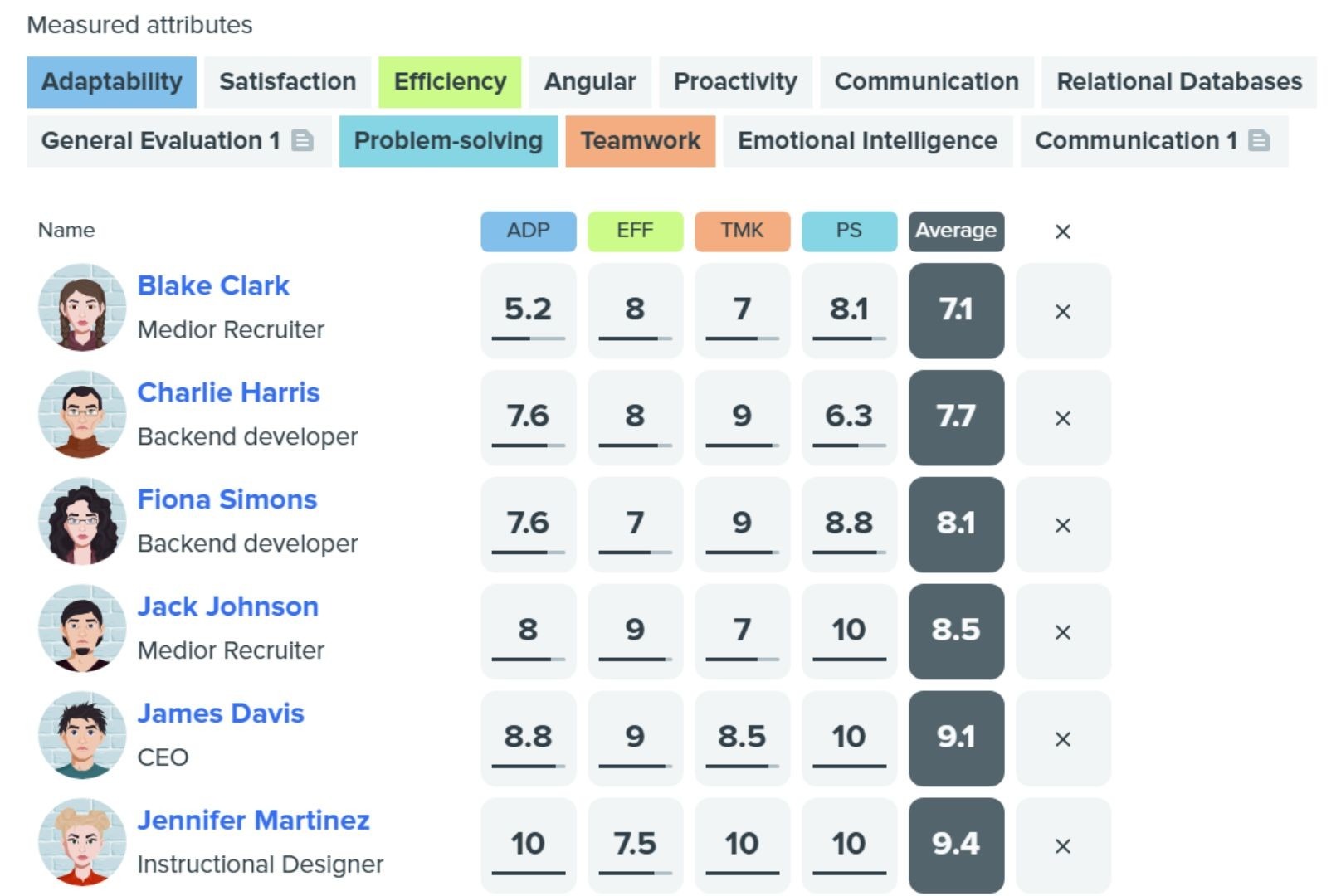
Kadar transforms scattered feedback and data into structured, real-time insights that empower HR team leaders to:
- Track skill development and engagement continuously without juggling multiple tools or spreadsheets.
- Measure the impact of HR initiatives clearly — for example, by comparing management effectiveness scores or employee feedback before and after targeted workshops.
- Share actionable reports with executives that demonstrate tangible results, increasing HR’s credibility and influence.
Unlike traditional HR software focused on executive reports, Kadar embeds reporting into daily HR team and management workflows. This shift enables HR teams to guide conversations, coach managers, and support development with confidence informed by data.
💡 Teams that adopt regular performance tracking are 24% more likely to improve business performance and 44% more likely to retain talent, according to SelectSoftware Reviews.
Action plans that don’t get lost after the review
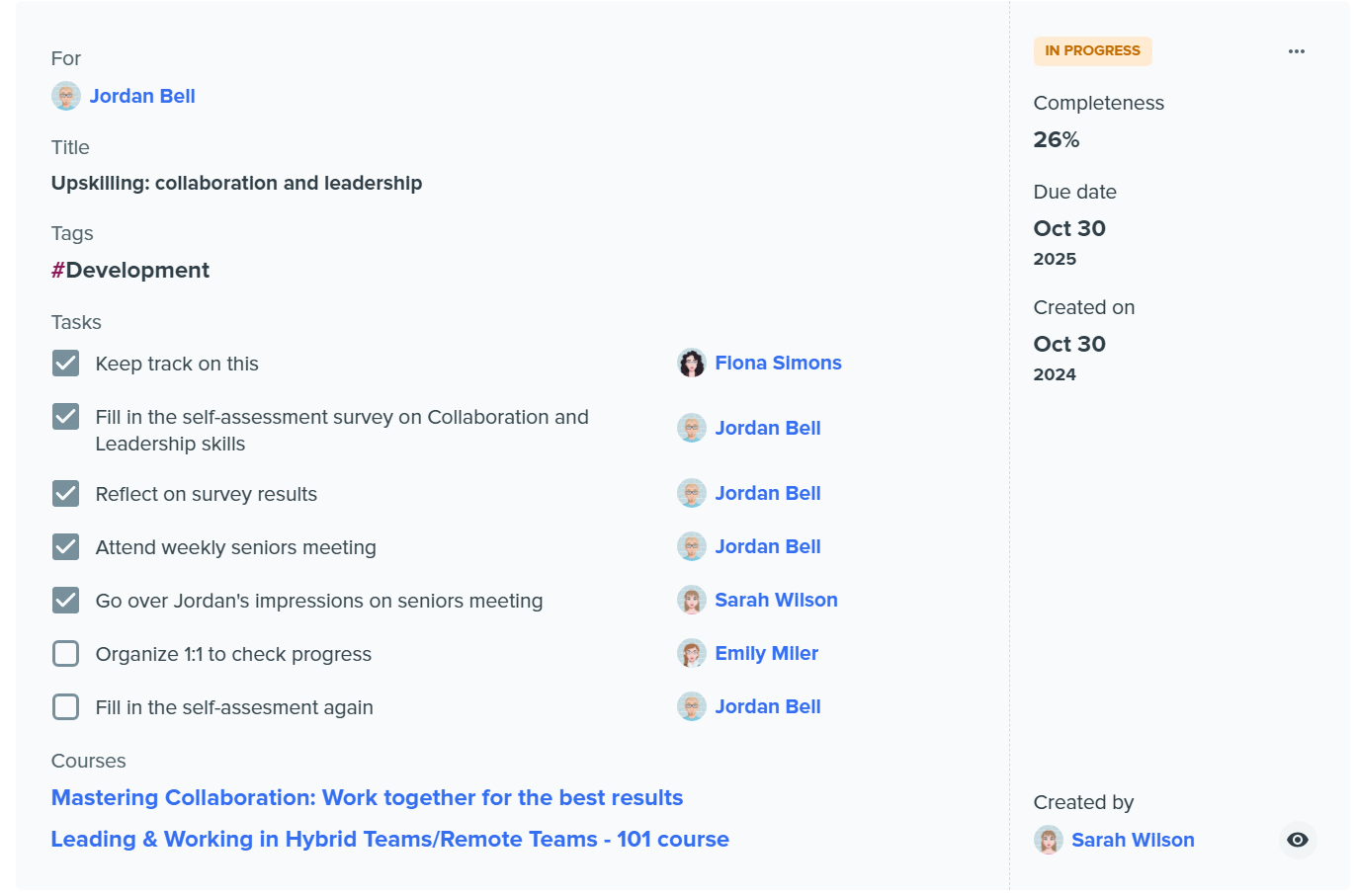
One of the most common frustrations for HR teams is that performance reviews often conclude with a conversation, but nothing follows afterward. People leave with notes — maybe a few goals — and no system for follow-up.
In Kadar, every review connects directly to an action plan. That plan lives in the same place, links to 1:1 meetings, and can be updated as the person grows. You can revisit it next quarter, adjust it based on new input, and keep development visible rather than theoretical.
External feedback without the usual friction
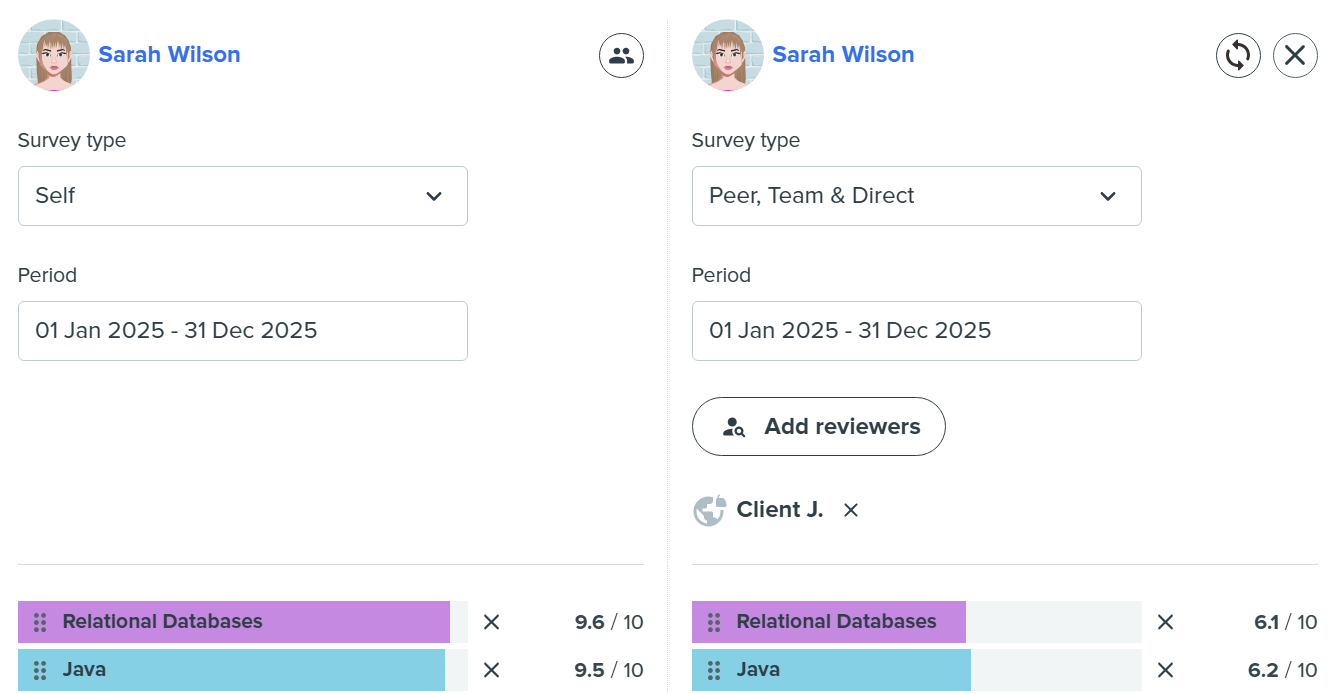
For service-based tech organizations, gathering client or external collaborator feedback is often crucial. Most tools make that complicated, requiring logins, licenses, or workarounds. Kadar lets you send surveys to external recipients with a simple link — no signup required. That input is added to the same reporting flow, allowing you to incorporate real client signals into performance conversations and development planning.
Structure, HR skills, and visibility
Most HR teams don’t fail because they lack effort; they fail because they’re set up without clarity. A strong HR team doesn’t mean more headcount. It means clear roles, the right mix of HR skills, and the ability to turn feedback into action.
Without structure, people step on each other’s toes. Without skills, HR becomes a service desk. And without visibility, leadership has to guess, often at the wrong time.
If your HR team is growing but still working with scattered notes, outdated forms, and last-minute requests, it may be time to shift from a reactive to a strategic approach.


